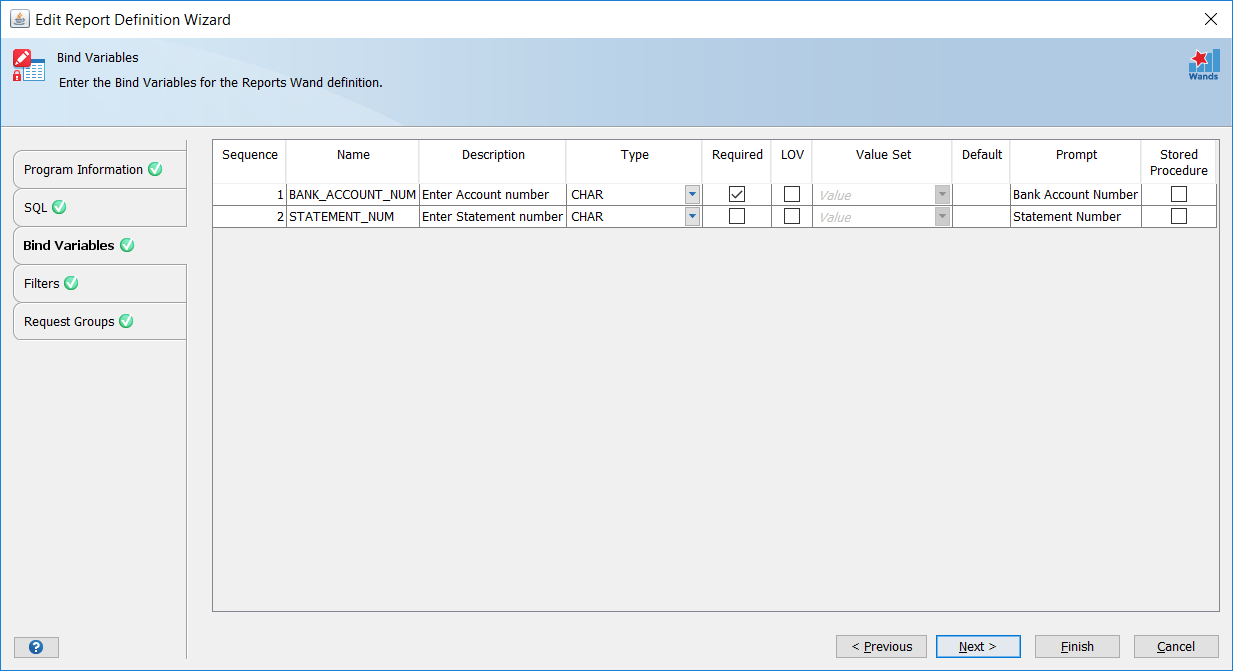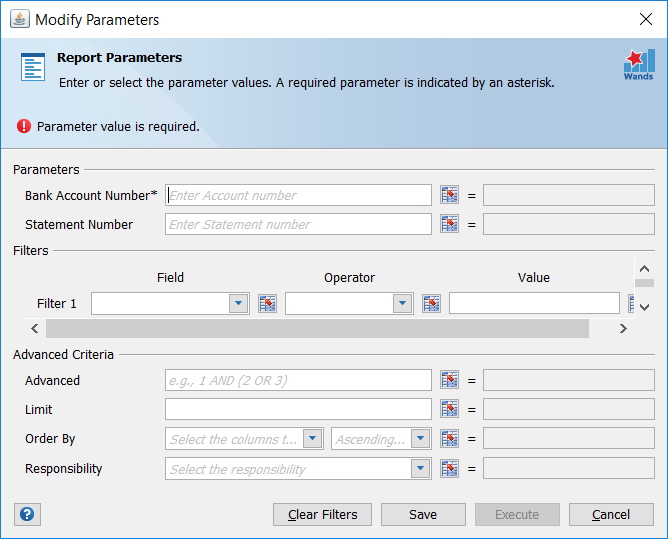Bind Variables
Bind Variables are parameters defined in a reports wand sql statement. They are implemented by the administrator or developer who created the SQL statementand are used to limit the results of a reports wand report.Bind Variables are identified by a preceding colon character.
| Field | Description | Editable | Effect on user |
|---|---|---|---|
| Sequence | The sequence number of bind variable in the SQL statement. It is determined by the sequence it is implemented in the SQL statement | No | Parameters will be presented to the users in this sequence. |
| Name | The name of the bind variable in the SQL statement. It is determined by the name given to the bind variable in the SQL statement. | No | If a Prompt value is not specified then the bind variable name will be presented to the users. |
| Description | The description of the bind variable and what it is used for. It is used to provide helpful information to the user. | Yes | Appears in the parameter field, presented to the users, as a light grey hint on how to use the parameter. |
| Type | The data type of the parameter. ie. CHAR – Character, DATE – date, INTEGER – number, DOUBLE – number with decimals | Yes | Assigning the correct data type to your bind variable with benefit the user greatly. If DATE is specified a calendar will be presented to assist users entering in dates. |
| Required | Force users to specify a bind variable value when executing the report. | Yes | Users will be required to enter a parameter value for bind variables configured as required. |
| LOV | List of Values. This indicates that you’d like to specify a Value Set for the list of values. The only supported list of values are for the CHAR data type. Custom SQL List of Values can also be created. Please see, Custom SQL List of Values for more information. | Yes – only if CHAR | Users will be allowed to select a value from the LOV. |
| Value Set | The Value Set in Oracle that will provide the users with the list of values. It can only be specified if the Type field is set to CHAR. Additionally, only table-validated and independent value sets are available, and table-validated value sets are restricted to those which do not contain special arguments (bind variables) in their WHERE clause, namely:
|
Yes – only if CHAR | Users will be allowed to select a value from the LOV. |
| Default | The default value for the bind variable | Yes | This will pre-populate the parameter so the user will already have an initial value that can be used. |
| Prompt | The user presentable name for the bind variable | Yes | If a Prompt value is not specified then the bind variable name will be presented to the users. |
| Stored Procedure | This indicates whether the bind variable has been created from a specified PL/SQL Stored Procedure or from the SQL. For more information please see PL/SQL Stored Procedures. | No | The user is unaffected, and will not be able to distinguish between PL/SQL Stored Procedure parameters and standard SQL parameters. |
Below is how the bind variables are presented in the Create Reports Definition Wizard

Below is how the bind variable will be presented to the user as Parameters.
